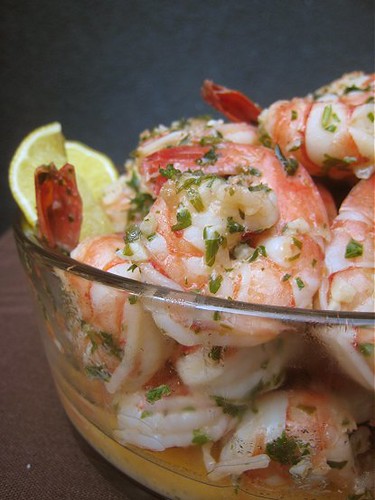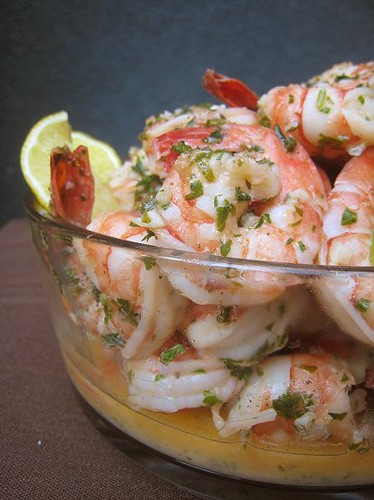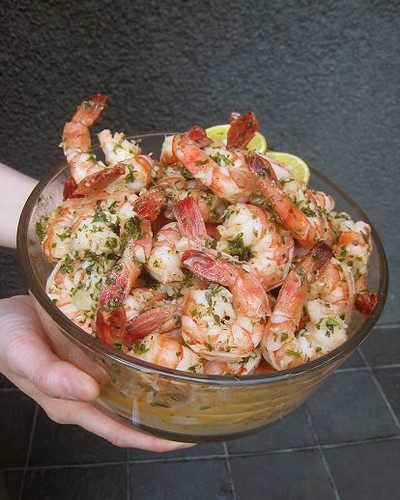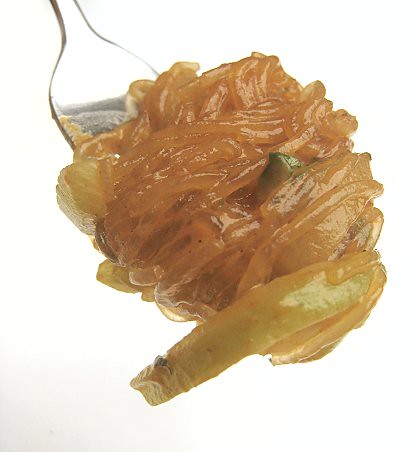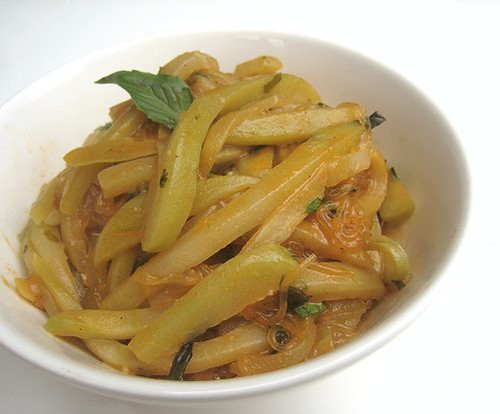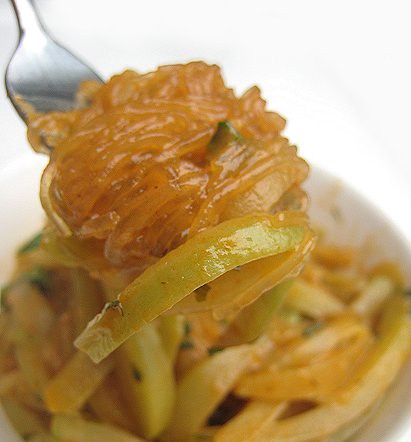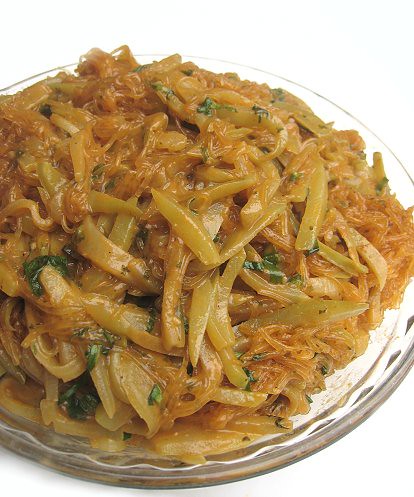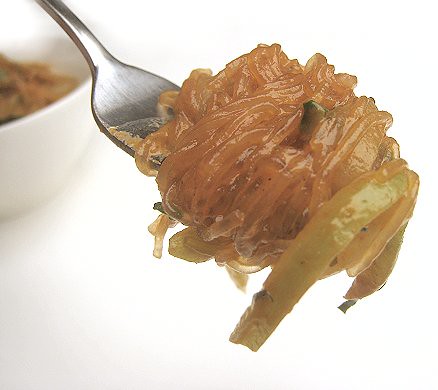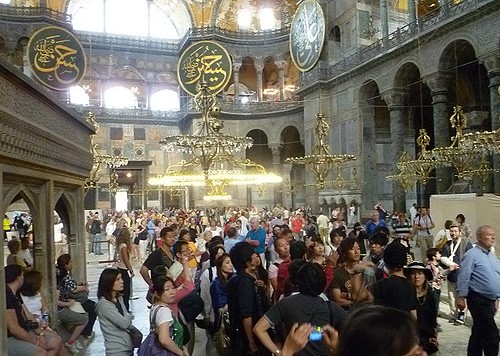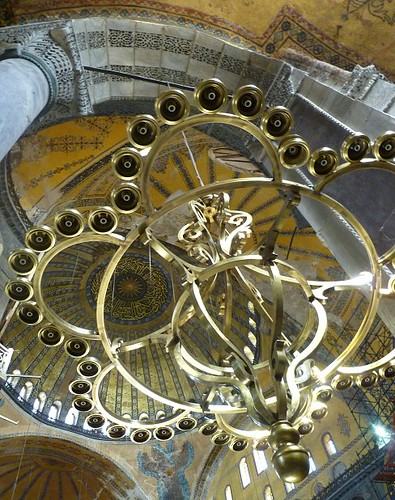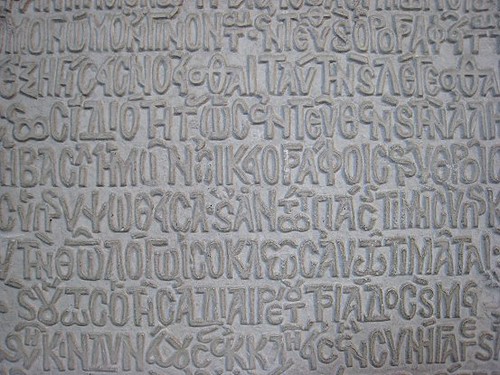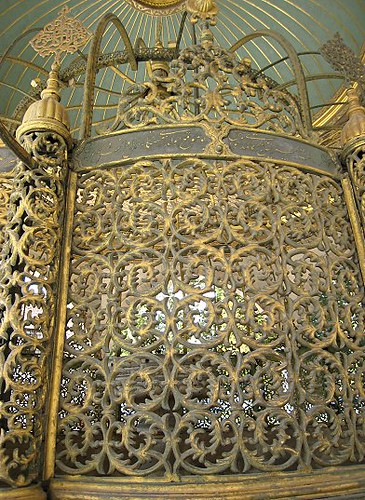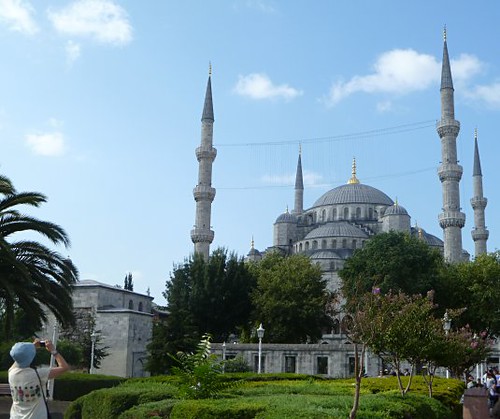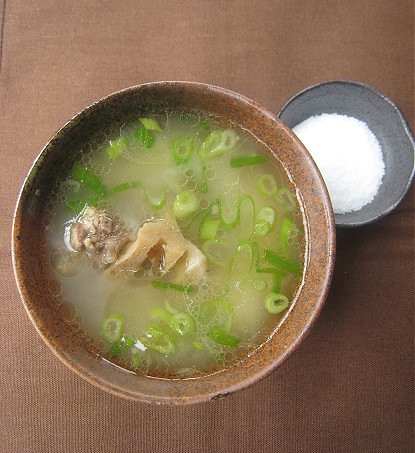
Korean Oxtail Soup, served with coarse salt.
TS:
We bought some oxtails one day. Now what?
We have used oxtail in applications that nod to Jamaica (Jamaican Oxtail Stew) and to Mexico (Shredded Beef and Tripe Tacos), but more often than not, we fall back to making our favorites, like a simple Clear Oxtail Soup, or Kare-Kare (Philippine Oxtail Peanut Stew) -- OMGTHEDELICIOUSNESS!!!
JS:
With oxtails, it is always the "Mendy's question".**
See, we're so enamoured with kare-kare and bulalo that we think them the apotheoses of oxtail, oxtail the best that it can be.
TS:
But, perhaps, this time we should made something totally new.
** Seinfeld reference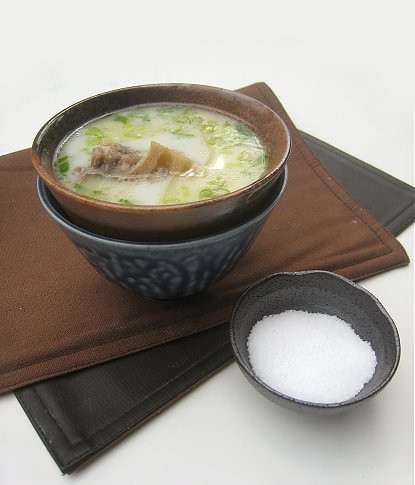
JS:
Okay then.
TS:
Well, we didn't venture too far when we made this Korean Oxtail Soup. I used the instructions from My Korean Cuisine as my guide.

TS:
First, I placed the meat in cold water and brought the water to a boil. Once the exterior of the meat has changed color, I drained the pot.
After draining, the meat is rinsed to get rid of any residual coagulated blood.
TS:
I put the meat back into the pot (which I also rinsed out), covered with cold water, and brought the mixture to a boil. The pot is kept at a light boil.
Oh, that pouch in there?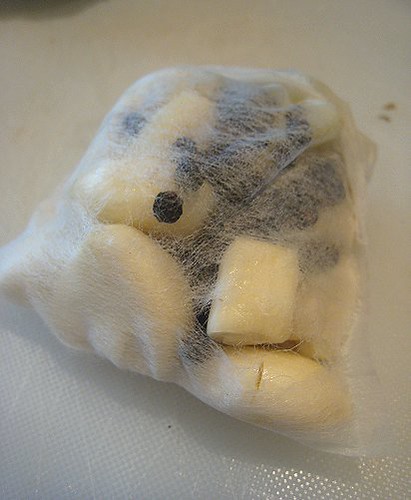
TS:
That pouch contained garlic, ginger, and black peppercorns.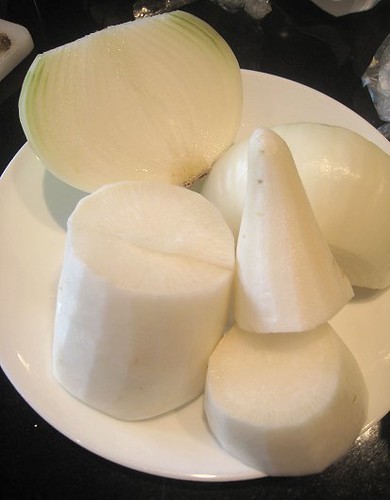
TS:
Some more components: onions and daikon radish.
TS:
After about 2 hours of boiling, I added the onions and daikon. Oh yeah, look at all that fat on top. Try to skim that off every so often.
I boiled the pot for a couple of hours more.
At this point, one can make the broth ultra-milky. My Korean Cuisine recommends removing all the solids from the soup, separating the meat from the bone, rinsing the bones clean and adding only the bones back into the pot, then boiling for more than 14 hours!
Well, I had already invested about 5 hours into this soup, and being lazy as I am, I wasn't in the mood for picking meat from bone, so my Korean Oxtail Soup stopped here.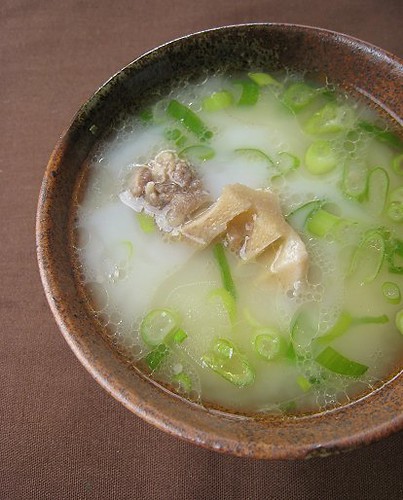
TS:
This soup is usually served unseasoned, with the diner adding salt at the table. I simply added some green onions for some freshness and crunch.
JS:
I must say I cannot help comparing this soup to our standard bulalo (Philippine Beef Bone Soup) or clear soup. I found this oxtail soup quite rich -- and I'm afraid that is not exactly a compliment. That is, it seemed to me slightly too bovine-y, as if the oxtails haven't transcended their nature and reached their apotheosis as food. The soup sits heavily in the mouth and on the tongue, and I felt that I needed to rinse the soup out after I finished eating.
Maybe I needed to eat it with some kimchi, which alas, we didn't have at that time.
TS:
Perhaps I'll reserve judgment until after I taste a "professionally"-made soup. But, in this instance, this soup was nice enough, but I'm afraid my heart still belongs to our favorites.
For a guide to making Korean Oxtail Soup:
My Korean Cuisine: Korean Oxtail Soup
eatingclub vancouver Korean
Korean Sprouts & Spicy Cold Cucumber Salad
Kimchi Fried Rice, an addiction
Korean Soybean Sprouts Pancake (Kongnamul Jeon)
Korean Pork Bulgogi (with Muu Namul, Kong Namul)
Korean Roast Salmon
Korean Fried Chicken
Korean Sweet Potatoes with Yangnyeom Sauce
Japchae / Jap Chae (Korean Glass Noodles with Vegetables)
Brown Rice Bibimbap (Korean Rice Bowl)
Korean Oxtail Soup (Gom Tang)
Enjoyed this post? Why not subscribe to our blog? Subscribe via reader or subscribe via email. Thank you! |

